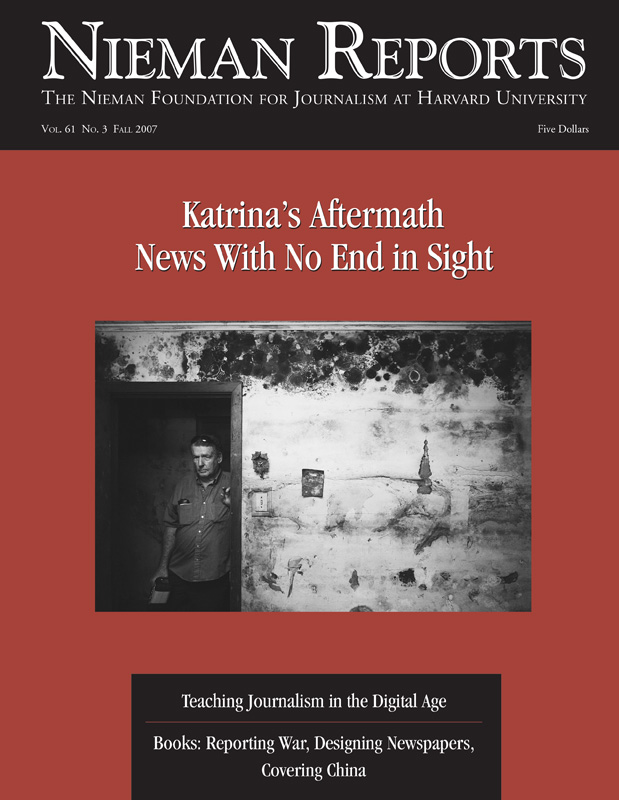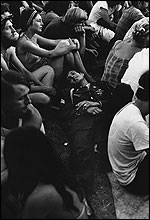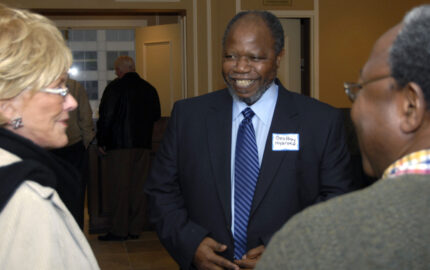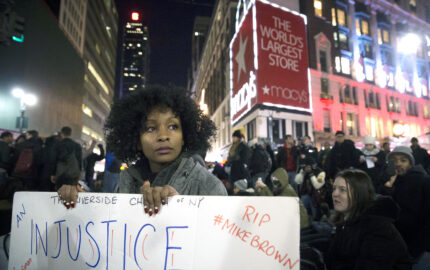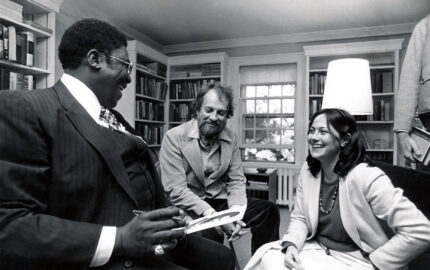My photography agency, Magnum Photos, Inc. was born at the Museum of Modern Art in 1947 and has been celebrating its 60th anniversary this year with a healthy enthusiasm. I came into this world one year earlier than Magnum's entry and have made my own continuing photographic voyage of discovery.
As part of Magnum's celebration, they published a series of portfolio books, "I Grandi Fotografi Magnum Photos," by Hachette Press. The individual work of Magnum's members was presented by each in his or her own book, published in chronological order. My edition was book number 57 out of 58. The Italian edition was published and released in March 2007. The French and Spanish editions will be published in late winter 2007, and the English version will be published in 2008.
The process of going through my archives dating back from the early 1970's to choose photos for my book was an exhilarating and emotional experience, bringing up all kinds of feelings about what I had been doing in my professional and personal life.
An Arduous Beginning
I graduated from the Newark School of Fine and Industrial Arts in Newark, New Jersey in 1969. I studied pictorial illustration while working full time as a hospital orderly at night. After graduation I moved into a full-time job on a cancer ward at St. Vincent's Medical Center Hospital in New York City as I pursued my dream of becoming a full-time photojournalist. The job turned into a six-year commitment consisting of 20-hour days. It was also my entry into an intensive study of the humanities that has served me well ever since.
My mother died very quickly from cancer when I was 12 years old. I was the oldest of three brothers and remember helping my father take care of her at home. My experiences at St. Vincent's brought me full circle, helping me to better understand the effect of those early experiences in my life and in my photography; they also helped me to appreciate the fate and task of being a human being.
The earliest photograph in my book came from the three-day, 1970 Atlanta Pop Music Festival, my first out-of-town assignment. It was the era of the Woodstock Music and Art Fair (which had gone down the previous summer), and it was a time for lighting up, dropping out, and feeling the music. The photo was made on the middle day of the festival (500,000 people showed up that night), and the image of the "relaxed" Vietnam vet reclining among other festival fans remains the only photograph that I can remember from those days.
It was an interesting festival, to say the least. I processed my film, made contact sheets, and finally selected 8" by 10" black and white prints that I thought captured the feel of the event. My gut instinct at that time kept me looking back to the photo of the Vietnam vet. It brought me back to events from previous years, such as the assassinations of Martin Luther King, Jr. and Robert F. Kennedy, the inner city upheavals and race riots, and the Vietnam War.
A Photographic Philosophy
Each time I approach a subject—no matter what it might be—I go into it thinking that I am required to make images I have not seen before. That makes my work interestingly difficult, and it also pushes me to try to reveal significant truths. A good photograph to me is one that combines something of the past, the present, and the possible future.
I have made enough pictures to sometimes have a tough time remembering photographs that were important to me at the time I made them. But the ones I do remember are those where this sense of riding through time—combining the past, present and future—is palpable. Once I'd chosen the photographs for my book and placed them in order, then and only then came an awareness of my personal photographic history. I am slow to see the darkness as well as the light in my work, but I know that both are present.
The last two photographs in the book reveal points of interest that matter. I photographed musicians in the first moments of their return to New Orleans and witnessed the joy and the sorrow of their performance. And I walked down 125th street in Harlem, occasionally turning onto side streets, and there I came upon more hard questions and a bit of hope for a better future. For a photojournalist, his or her collective work has to be placed into perspective at some point. For me, this book is a good start to bringing my work into perspective—work where my straight reporting and personal view come together nicely, emerging out of honest observation and from my heart.
Eli Reed, a 1983 Nieman Fellow, is a photojournalist and professor at the University of Texas at Austin.
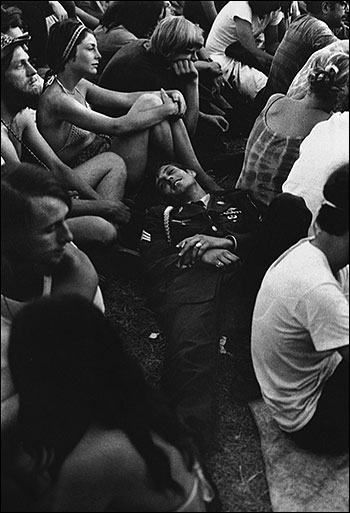
Atlanta Pop Music Festival. 1970. Photos by ©Eli Reed/Magnum.
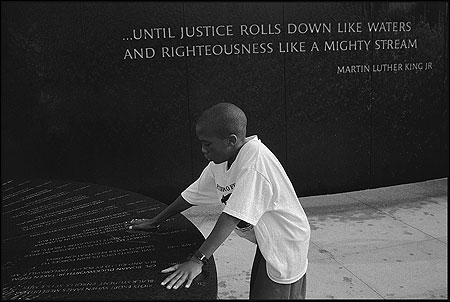
A young boy at the Martin Luther King, Jr. Memorial in Montgomery, Alabama. 1995.
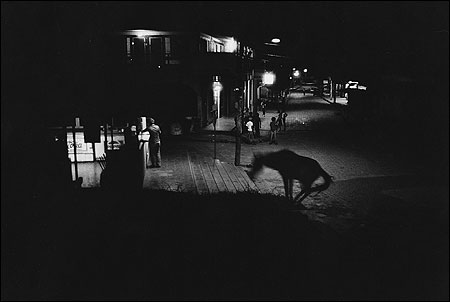
Bluefields, Nicaragua. 1982.

New Orleans, Louisiana. October 2005.
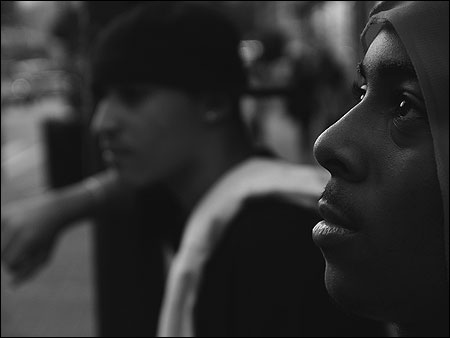
Harlem, New York. 2005.
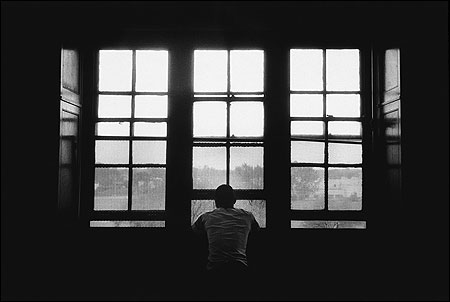
A state school for orphans in Detroit, Michigan. 1988.
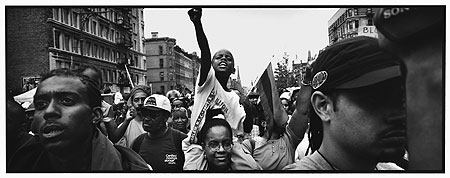
Participants at the second Million Youth March in Harlem, New York City. 1999.
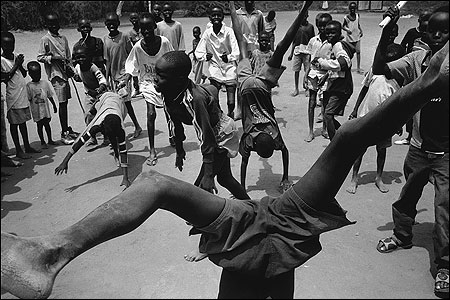
Boys playing in the Kakuma Refugee Camp, Kenya. August 2001.
As part of Magnum's celebration, they published a series of portfolio books, "I Grandi Fotografi Magnum Photos," by Hachette Press. The individual work of Magnum's members was presented by each in his or her own book, published in chronological order. My edition was book number 57 out of 58. The Italian edition was published and released in March 2007. The French and Spanish editions will be published in late winter 2007, and the English version will be published in 2008.
The process of going through my archives dating back from the early 1970's to choose photos for my book was an exhilarating and emotional experience, bringing up all kinds of feelings about what I had been doing in my professional and personal life.
An Arduous Beginning
I graduated from the Newark School of Fine and Industrial Arts in Newark, New Jersey in 1969. I studied pictorial illustration while working full time as a hospital orderly at night. After graduation I moved into a full-time job on a cancer ward at St. Vincent's Medical Center Hospital in New York City as I pursued my dream of becoming a full-time photojournalist. The job turned into a six-year commitment consisting of 20-hour days. It was also my entry into an intensive study of the humanities that has served me well ever since.
My mother died very quickly from cancer when I was 12 years old. I was the oldest of three brothers and remember helping my father take care of her at home. My experiences at St. Vincent's brought me full circle, helping me to better understand the effect of those early experiences in my life and in my photography; they also helped me to appreciate the fate and task of being a human being.
The earliest photograph in my book came from the three-day, 1970 Atlanta Pop Music Festival, my first out-of-town assignment. It was the era of the Woodstock Music and Art Fair (which had gone down the previous summer), and it was a time for lighting up, dropping out, and feeling the music. The photo was made on the middle day of the festival (500,000 people showed up that night), and the image of the "relaxed" Vietnam vet reclining among other festival fans remains the only photograph that I can remember from those days.
It was an interesting festival, to say the least. I processed my film, made contact sheets, and finally selected 8" by 10" black and white prints that I thought captured the feel of the event. My gut instinct at that time kept me looking back to the photo of the Vietnam vet. It brought me back to events from previous years, such as the assassinations of Martin Luther King, Jr. and Robert F. Kennedy, the inner city upheavals and race riots, and the Vietnam War.
A Photographic Philosophy
Each time I approach a subject—no matter what it might be—I go into it thinking that I am required to make images I have not seen before. That makes my work interestingly difficult, and it also pushes me to try to reveal significant truths. A good photograph to me is one that combines something of the past, the present, and the possible future.
I have made enough pictures to sometimes have a tough time remembering photographs that were important to me at the time I made them. But the ones I do remember are those where this sense of riding through time—combining the past, present and future—is palpable. Once I'd chosen the photographs for my book and placed them in order, then and only then came an awareness of my personal photographic history. I am slow to see the darkness as well as the light in my work, but I know that both are present.
The last two photographs in the book reveal points of interest that matter. I photographed musicians in the first moments of their return to New Orleans and witnessed the joy and the sorrow of their performance. And I walked down 125th street in Harlem, occasionally turning onto side streets, and there I came upon more hard questions and a bit of hope for a better future. For a photojournalist, his or her collective work has to be placed into perspective at some point. For me, this book is a good start to bringing my work into perspective—work where my straight reporting and personal view come together nicely, emerging out of honest observation and from my heart.
Eli Reed, a 1983 Nieman Fellow, is a photojournalist and professor at the University of Texas at Austin.

Atlanta Pop Music Festival. 1970. Photos by ©Eli Reed/Magnum.

A young boy at the Martin Luther King, Jr. Memorial in Montgomery, Alabama. 1995.

Bluefields, Nicaragua. 1982.

New Orleans, Louisiana. October 2005.

Harlem, New York. 2005.

A state school for orphans in Detroit, Michigan. 1988.

Participants at the second Million Youth March in Harlem, New York City. 1999.

Boys playing in the Kakuma Refugee Camp, Kenya. August 2001.
